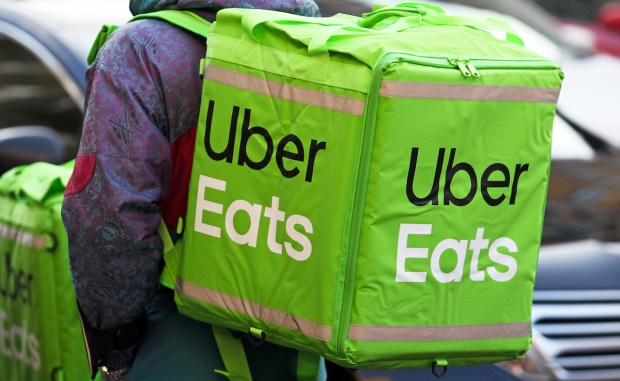
The connected economy is making strides via a partnership between Uber Eats and Instacart.
The two companies announced Tuesday (May 7) that in the coming weeks, Instacart customers will be able to order from a range of restaurants on its platform through a new “Restaurants” tab, enabled by Uber Eats.
“Through this partnership, Instacart customers now have access to both the best online grocery selection in the U.S. and restaurant delivery, making it even easier for them to conveniently tackle all their food needs from a single app,” Instacart CEO and Chair Fidji Simo said in a statement. “… [Customers] can now get the food they want, from the retailers and restaurants they love, all within the Instacart app.”
The move comes as aggregators increasingly look to meet more of consumers’ food needs, with Instacart’s addition of restaurant ordering following restaurant aggregators’ expansion of their grocery businesses. DoorDash reported during its May 1 earnings call, for instance, that its grocery business saw its third straight quarter of triple-digit year-over-year growth. Plus, Uber touted in its earnings release Wednesday (May 8) that it has expanded its grocery merchant selection and that it has been integrating grocers’ loyalty programs into the platform.
“The activity called eating is what drives where and how consumers buy their food,” PYMNTS’ Karen Webster observed in a feature last year. “Platforms help connect and aggregate the many options available to consumers to buy the food they want to eat, wherever they want to eat it. In this connected economy, grocery stores and restaurants and aggregators now compete for the consumer’s share of stomach and food spend. They do that in a category consumers don’t think of as grocery stores or restaurants or delivery aggregators, but eating.”
Many shoppers want to be able to get their restaurant and grocery needs met from a single, unified digital platform that facilitates a wider range of their daily activities. The PYMNTS Intelligence study “Consumer Interest in an Everyday App” found that 35% of U.S. consumers expressed a strong desire for an everyday app. Among these, 69% would want to purchase groceries from such an app, and 65% would want to make purchases from restaurants.
It is not only aggregators looking to capture the opportunity to be consumers’ one-stop provider for food. Take Wonder, the food company founded and helmed by Jet.com Co-founder Marc Lore, which provides omnichannel food halls and acquired meal kit firm Blue Apron to create a “mealtime super app.”
In a March interview with PYMNTS, Wonder Chief Growth and Marketing Officer Daniel Shlossman noted that the company’s in-Walmart location enables it to link restaurant ordering opportunities to consumers’ grocery and retail shopping routines.
“We do expect customers to place orders maybe when they are heading into the Walmart, and the food is going to be right there ready for them for pickup when they’re leaving,” Shlossman said. “We also see people that are maybe in the middle of running errands, and they’ve just made their Walmart run, and they can stop off and have a bite before they head to their next destination. So, we see lots of use cases.”